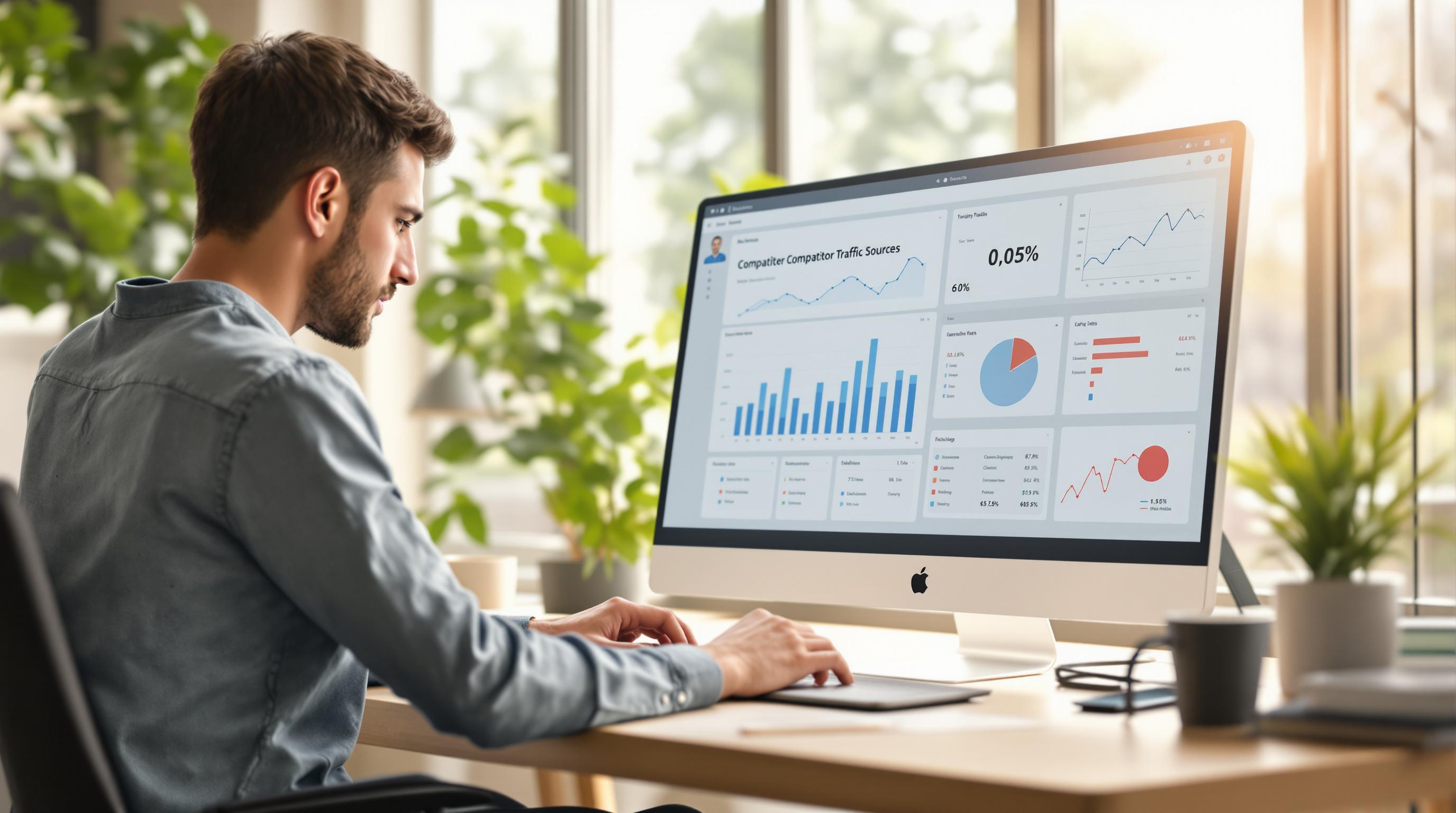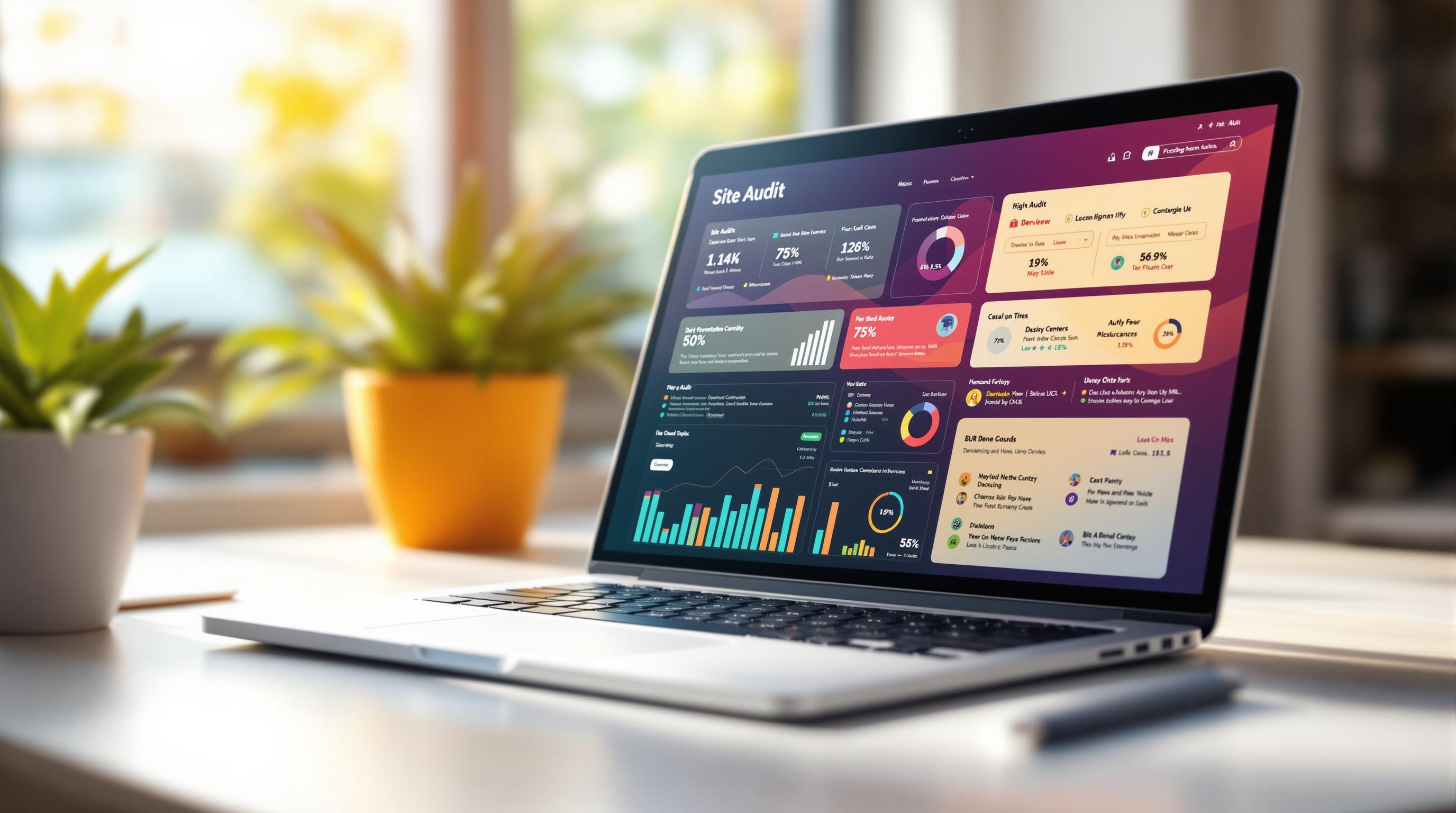This method helps you secure links from curated resource pages, which are credible and relevant. Here's what you'll learn in this guide:
- What is Resource Page Outreach?: It's about pitching your content to websites with curated lists of resources.
- Why it works: These backlinks improve SEO, credibility, and drive targeted traffic.
- Who benefits most: Ideal for businesses offering valuable, niche-specific content.
- How to start:
- Use Google search operators to find resource pages.
- Analyze competitors' backlinks.
- Explore industry directories for opportunities.
- Key outreach tips:
- Personalize your emails for better responses.
- Follow up strategically to improve success rates.
Whether you're a beginner or experienced in SEO, this guide breaks it down step-by-step for effective outreach.
How to Build Unique Backlinks With Resource Page Link Building
Finding Resource Pages
Learn how to locate high-quality resource pages using proven strategies and tools.
Search Operators Guide
Google search operators can help you zero in on relevant resource pages with ease. Combine your industry keyword with these operators to refine your search:
| Operator Format | Example (for "SEO") |
|---|---|
inurl:resources |
seo inurl:resources |
"best resources" |
"best SEO resources" |
intitle:links |
SEO intitle:links |
"helpful links" |
"helpful SEO links" |
"resource page" |
"SEO resource page" |
Try different keyword variations to uncover a broader range of results.
Additionally, take a closer look at what your competitors are doing to find even more opportunities.
Competitor Backlink Research
Analyzing your competitors' backlinks can reveal resource pages that already link to similar content. This is a great way to identify potential linking opportunities.
"A competitor backlink analysis is an SEO tactic that reveals your competitors' total number of backlinks, linking domains, and top-linked pages to help you find link building opportunities for your site." - Carlos Silva
Here’s how to conduct this type of research effectively:
- Use tools like Semrush, Ahrefs, or Moz to examine competitor backlink profiles.
- Filter URLs that include terms such as "resources" or "links."
- Export these potential opportunities into a spreadsheet for evaluation.
- Prioritize pages based on their domain authority and relevance to your niche.
This method works exceptionally well when combined with additional strategies like searching industry-specific directories.
Industry Directory Search
Industry directories are another excellent source for finding resource sections, especially for outreach. These directories often feature niche-specific pages that can be ideal for backlinks.
Here are some key types of directories to explore:
- Educational Resources: Perfect for linking to content aimed at learning or training.
- Professional Services: Great for business-related resources.
- Tech Directories: Focused on software and digital tools.
- Local Business Directories: Useful for region-specific content.
Look for directories that are regularly updated and actively moderated. For SaaS companies, tech startup directories are particularly helpful, as they often include sections dedicated to tools, guides, and industry-specific resources. These areas can attract high-quality backlinks and boost your visibility.
Quality Check Process
Evaluate resource pages methodically to pinpoint the best opportunities and improve your outreach efforts.
Domain Metrics Review
Start by analyzing key domain metrics that indicate a website's authority:
| Metric | Acceptable Range | Ideal Range |
|---|---|---|
| Domain Authority (DA) | 40–50 | 60+ |
| Spam Score | 1–3 | 0 |
According to research by Ahrefs, 90% of websites don't receive any organic traffic because they lack quality backlinks .
"Using links to approximate the popularity of pages was a big part of the original Google algorithm, and whilst a lot has changed since, we can see this is still a vital component today." - Tom Capper, Senior Search Scientist at Moz
After reviewing domain metrics, shift your focus to the quality of links already present on the page.
Current Link Review
Here’s what to look for in high-quality resource pages:
- Clear topical focus and expertise in the subject
- Updated, well-maintained links
- Professional writing and presentation
- Properly attributed content, showcasing author credibility
Watch out for these warning signs:
- Broken or outdated links
- Content that doesn’t match the topic or seems irrelevant
- Poor formatting or disorganized structure
- Overly promotional material
"I tend to spend more time reviewing pages than actually collecting. Cast a wide net, but spend a lot of time making sure you're being selective." - Eric Carrell & Sebastian Schaffer, SEO Experts, dofollow.com
Once you've screened for domain and link quality, consider factors that can improve your chances of getting backlinks.
Success Rate Factors
Your success in securing backlinks often depends on these elements:
- Pages with active submission policies
- Regularly updated content
- Responsive administrators
- Clear and logical page organization
- Strong alignment with your content’s topic
Pages with active submission policies and clear guidelines are your best bet. Suggesting specific placements for your content can also increase your chances .
To improve acceptance, use tools like Ahrefs or Broken Link Checker to identify broken links on resource pages. Then, propose your content as a replacement .
sbb-itb-d7fe25c
Email Outreach Guide
Crafting effective outreach emails is essential for securing backlinks. While 91.5% of cold emails go unanswered, personalization can make all the difference .
Email Personalization
Personalization isn’t just about using someone’s name. Data shows personalized emails get 33% more replies than generic ones . Here’s how you can add a personal touch to your outreach:
| Personalization Element | Purpose | Impact |
|---|---|---|
| Website Research | Reference specific content | Shows genuine interest |
| Social Media Activity | Mention recent posts/achievements | Demonstrates engagement |
| Mutual Connections | Highlight shared contacts | Builds credibility |
| Recent Publications | Comment on their work | Shows you've done your homework |
Before sending the email, engage with the recipient on social media. A quick comment or interaction can create familiarity, making your email more likely to get noticed.
Focus on Value
Your email should focus on what’s in it for them, not just what you want. Here’s how you can highlight value:
- Relevance to Their Audience: Be specific about how your content addresses gaps or provides insights that align with their audience's needs.
- Content Quality: Provide solid proof of your content’s worth. Mention things like engagement stats, expert contributions, recent updates, or original research.
- Mutual Benefits: Explain how featuring your content enhances their resource page while also benefiting their readers.
Subject Line Tips
Since 64% of people decide whether to open an email based on the subject line , getting this part right is critical.
| Do | Don’t |
|---|---|
| Keep it under 60 characters | Use clickbait tactics |
| Include specific numbers or stats | Write generic phrases |
| Create curiosity without overhyping | Make false promises |
| Use the recipient’s name strategically | Overuse punctuation |
"Now more than ever, you must give people a good reason to open your email, which means there's a lot riding on the subject line - the first step in sparking further action." - Outreach
For resource page outreach, your subject line should focus on:
- Mentioning the specific resource page
- Referencing mutual connections, if applicable
- Clearly stating the value you’re offering
- Adding a light sense of urgency without being pushy
Personalized subject lines can boost open rates by up to 26% .
Next, we’ll dive into follow-up strategies to maximize your outreach success.
Follow-up Strategy
Following up after personalized email outreach can significantly improve response rates - by as much as 56%, according to research .
Follow-up Schedule
Research indicates that 80% of sales happen after 5–12 follow-up emails . To strike a balance between persistence and respect, consider this schedule:
| Follow-up Stage | Timing | Purpose |
|---|---|---|
| First Follow-up | 5–7 days after the initial email | Gentle reminder |
| Second Follow-up | 5 days after the first follow-up | Share new value |
| Third Follow-up | 7 days after the second follow-up | Reference recent events |
| Final Follow-up | 7–10 days after the third follow-up | Last chance to connect |
Handling Responses
Professionalism and flexibility are key when managing responses. A 2023 lemlist study revealed that using personalized video follow-ups can increase reply rates by 300% . Here’s how to approach it:
- Address common concerns: Tailor your responses to highlight how your proposal benefits their audience, especially for industries less familiar with SEO.
- Add value in every message: Share useful insights, industry updates, or relevant resources that align with their interests.
- Engage on multiple platforms: Don’t limit yourself to email - connect on LinkedIn or other professional networks to reinforce your outreach.
Effective response management creates a strong foundation for successful link placement.
Link Placement Tips
When suggesting link placements, focus on collaboration rather than being overly assertive. Here's a quick guide:
| Do | Don't |
|---|---|
| Suggest specific sections | Demand exact anchor text |
| Offer placement options | Use pushy language |
| Reference similar examples | Oversell your content |
| Highlight audience benefits | Focus only on SEO advantages |
Here’s an example of a polite and effective follow-up message:
"Hey {{contact_first}}, I just wanted to check if you had a chance to review my post. Would you consider including it in your next roundup? Thanks for your time!"
Next Steps
Process Summary
When conducting outreach for resource page backlinks, it's important to track key performance metrics:
- Response rate: How many replies you get from your outreach efforts
- Conversion rate: The number of secured links compared to responses
- Link quality: Factors like domain authority and relevance of the sites linking back to you
- Follow-up effectiveness: How well your follow-up efforts perform
Securing backlinks from relevant websites can have a strong impact on your organic traffic. These metrics help you build a more efficient and results-driven outreach campaign.
Getting Started
To kick off your outreach efforts, consider setting up a structured tracking system with these steps:
-
Campaign Setup
- Use an Excel or Google Sheet to organize resource pages, contact details, outreach statuses, responses, and links gained.
-
Performance Tracking
- Use Google Analytics to monitor referral traffic.
- Tools like Ahrefs or Moz can help you assess backlink quality.
- Set up UTM parameters to track link performance and keep an eye on brand mentions.
-
Quality Control
- Regularly review the backlinks you acquire for relevance, domain authority, traffic quality, and proper anchor text usage.
Having a clear and organized plan in place makes it easier to scale your outreach efforts. If needed, seeking professional guidance can also help you achieve stronger results.
BrightSide SEO Services

If you're looking for expert support in link building, BrightSide SEO offers customized strategies focused on ethical, sustainable growth through white-hat techniques.
Their Growth Plan, priced at $899 per month, includes:
- Tracking of 20 keywords
- Creation of 10 strategic blog posts
- Competitor analysis
- Detailed performance reporting
- Full outreach campaign management
This service ensures a high-quality, scalable approach to link building. According to recent data, 58.4% of SEO experts consider links to have a strong influence on search rankings .


